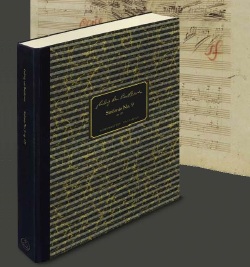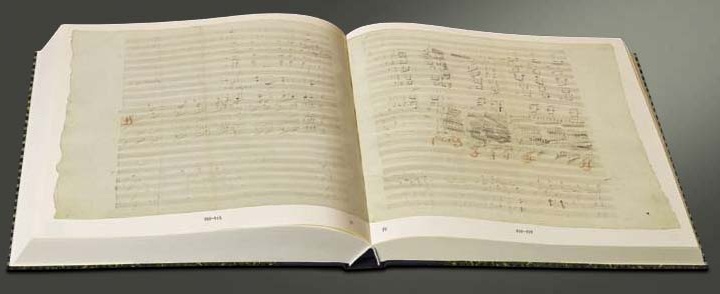|
|
Ode to Joy Ludwig van Beethoven Symphony No.9 op.125 Staatsbibliothek zu Berlin Beethoven-Haus, Bonn Bibliothèque National, Paris Deluxe facsimile edition |
|  |
|
| With his ninth symphony, Beethoven ventured into new musical dimensions. In the final movement, soloists and chorus join forces with the orchestra and Schiller’s “Ode to Joy” becomes a global aspiration, a declaration: “Alle Menschen werden Brüder! / All mankind becomes brothers”. In his commentary the great Beethoven scholar Lewis Lockwood describes the plea which Beethoven wanted to deliver at that time with this work and how views of this have changed over the centuries. Jonathan Del Mar, a renowned editor of Beethoven’s works, comments on noteworthy passages in the autograph manuscript and allows the reader to share in the composer’s working process. Already the large-format paper which Beethoven used for some passages makes the large forces clear. Cuts, sometimes reversed later, show how he wrestled with the final version of the musical text and refined it right down to the last detail. |
| The history of the autograph manuscript reflects an episode in German history: after storage in various places because of the war, the major parts were returned to Berlin but were initially divided by the Berlin Wall and only reunited in 1990. Martina Rebmann who is the Director of the Music Department at the Staatsbibliothek zu Berlin traces this story. In 1972 the main theme of the last movement was chosen by the Council of Europe as the European anthem and in 1985 it was adopted by the European Community as its official anthem. In 2001 the manuscript was listed in UNESCO’s Memory of the World Register. For the first time the facsimile presents all the parts of the manuscript including pages preserved in Bonn and Paris as well as the trombone and contrabassoon parts. 2/2019. Full-color in the original format: 37 x 40 cm, 436 + 42 pp. (Published as volume II/42 in the series Documenta Musicologica. Available now) |
| |  | |
|
| OMI - Old Manuscripts & Incunabula PO Box 6019 FDR Station New York NY 10150 tel/fax 212/ 758-1946 http://www.omifacsimiles.com • immels@earthlink.net |